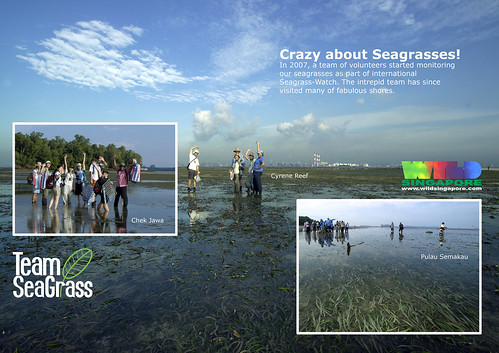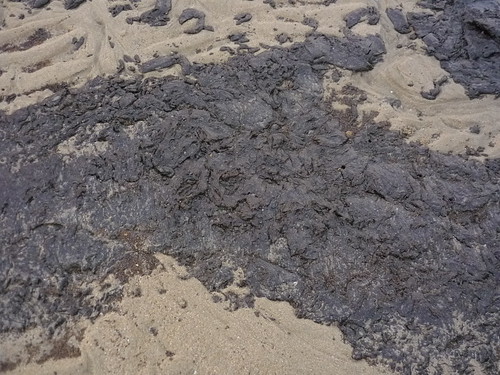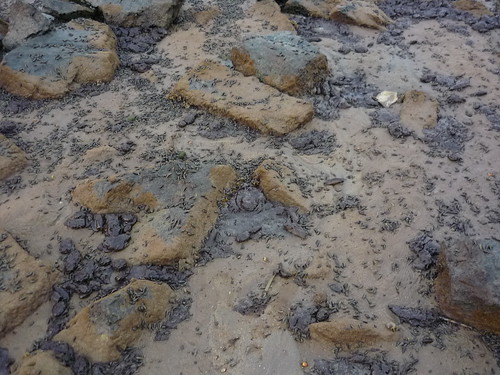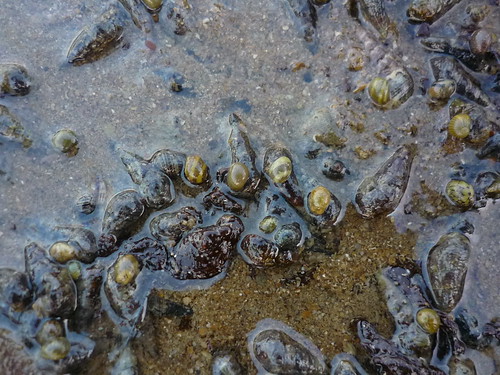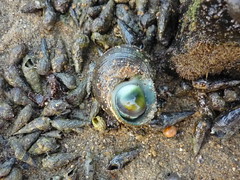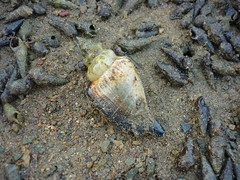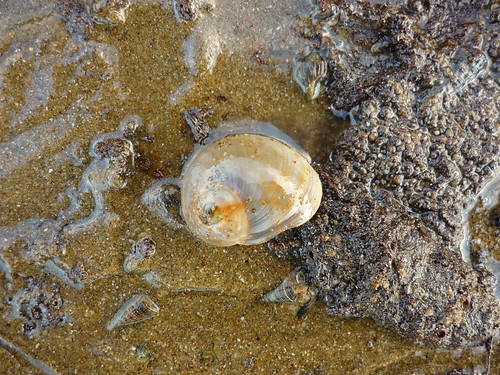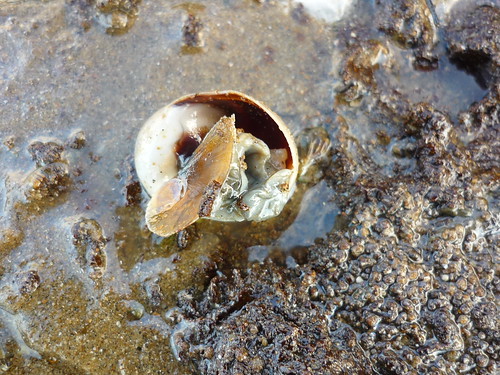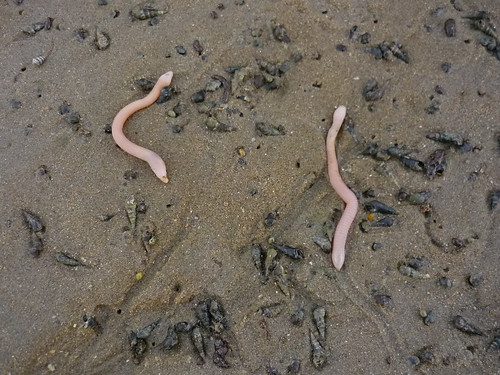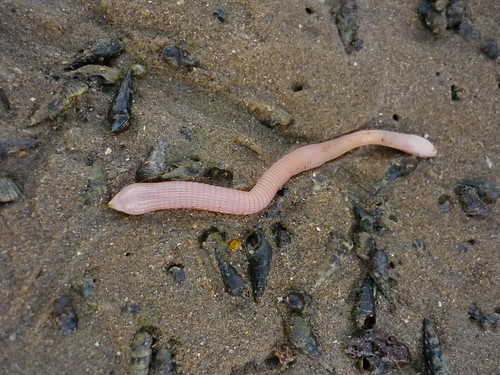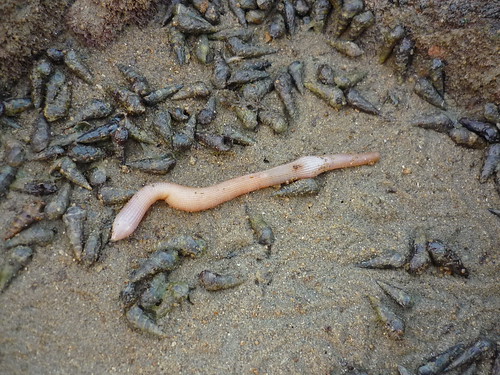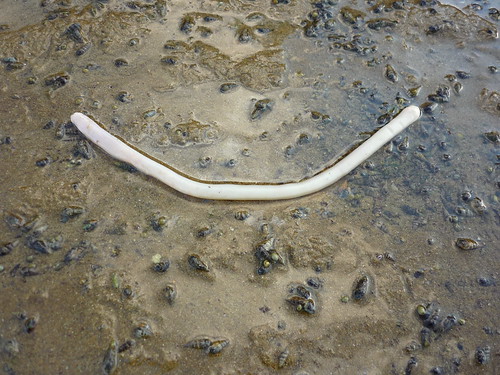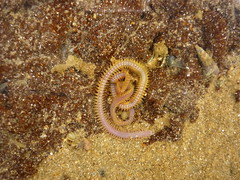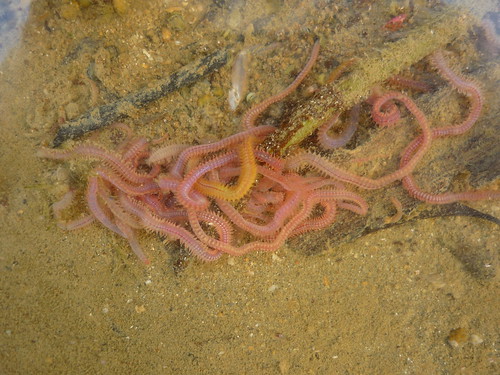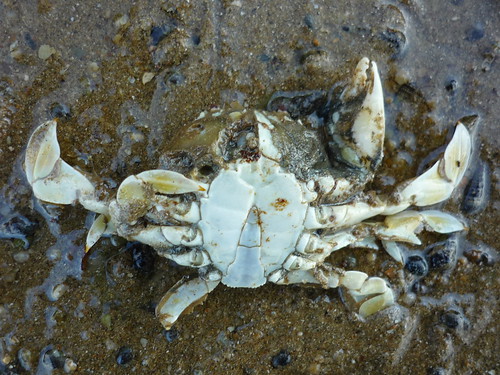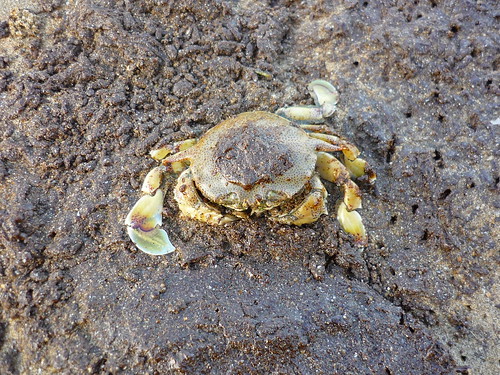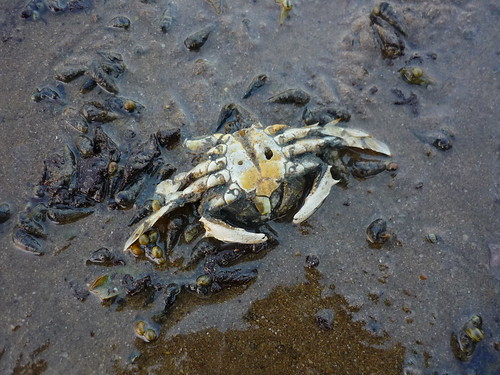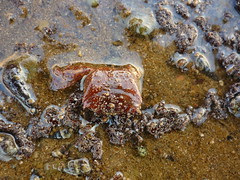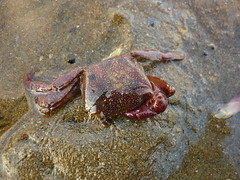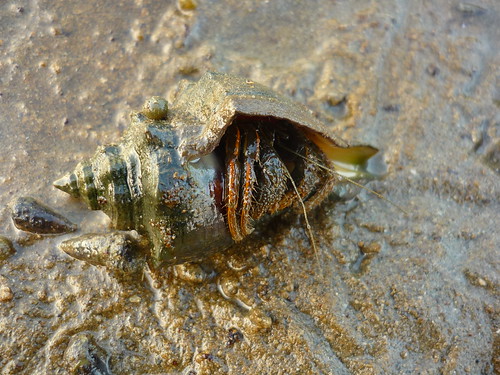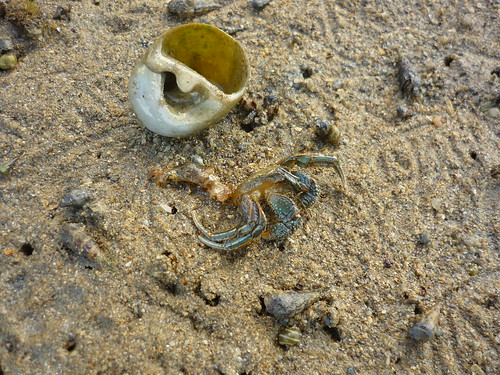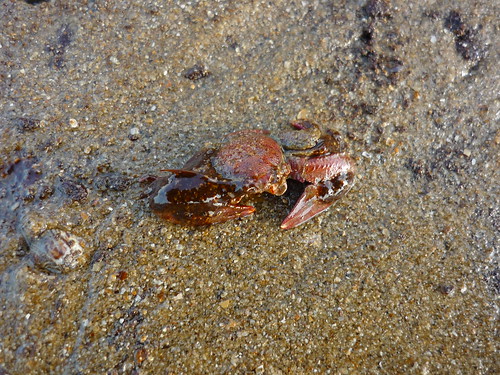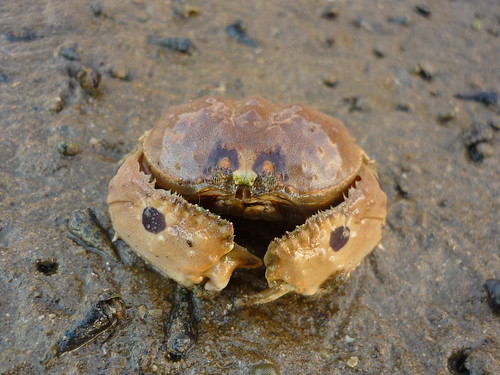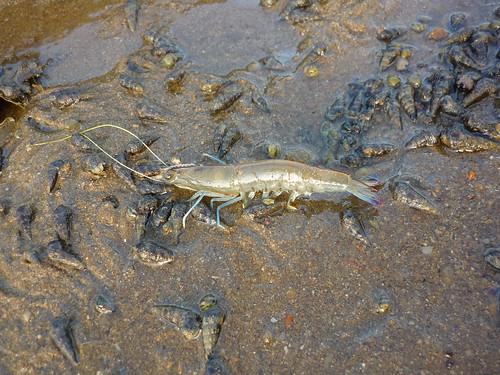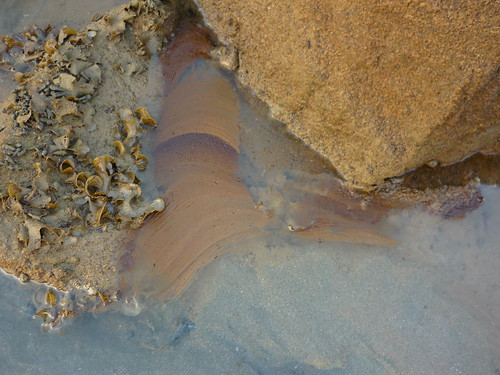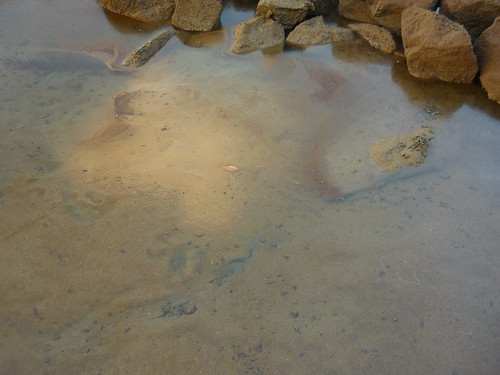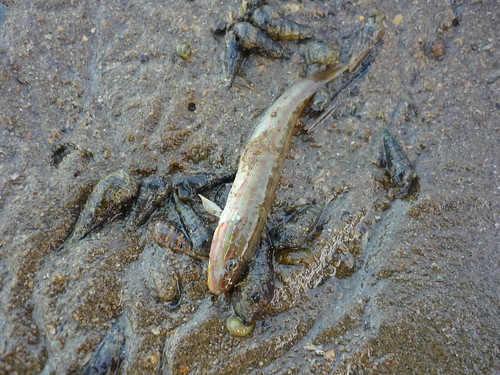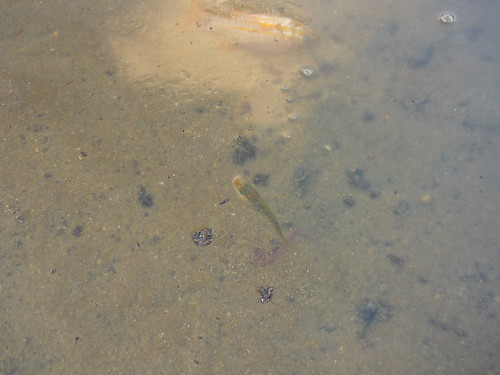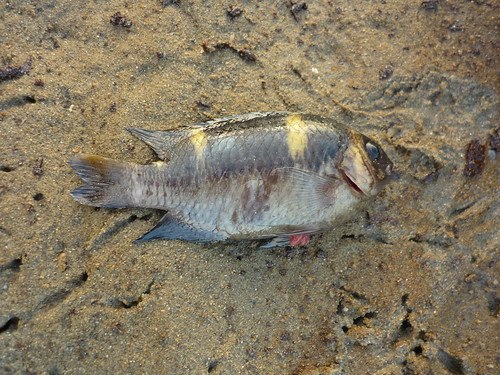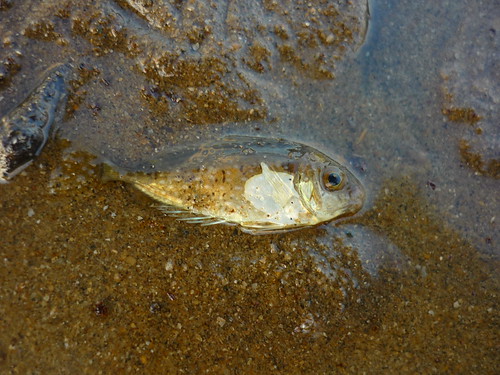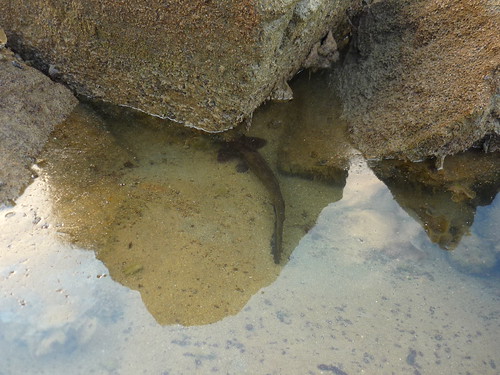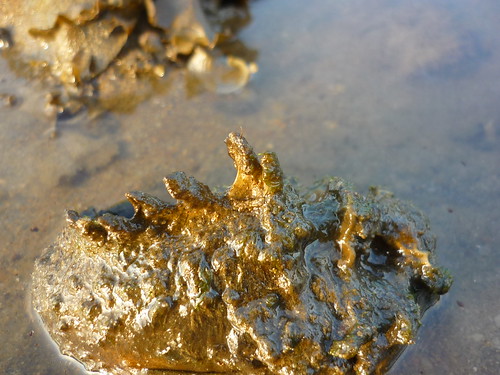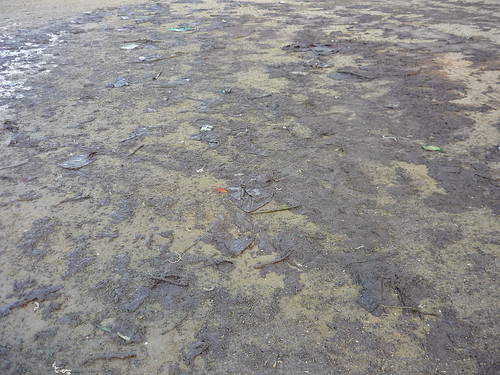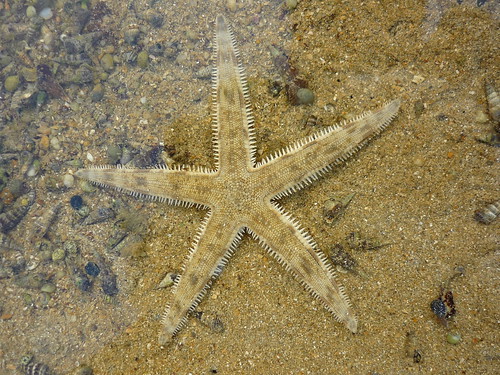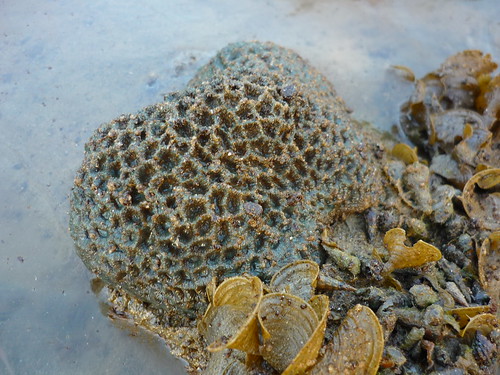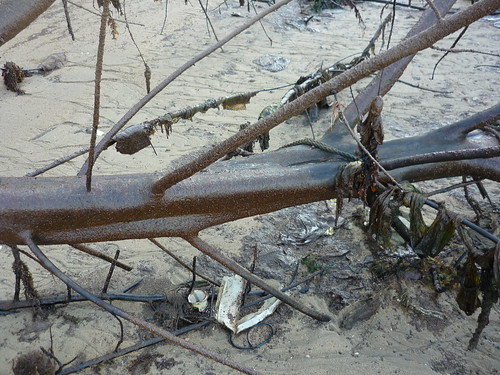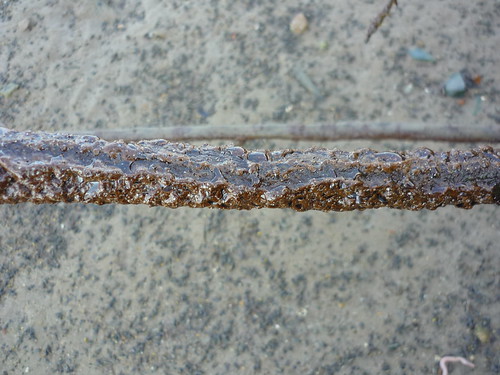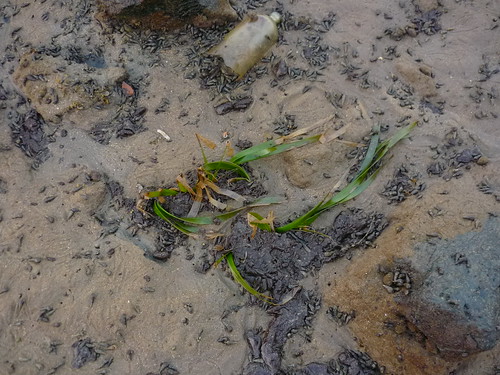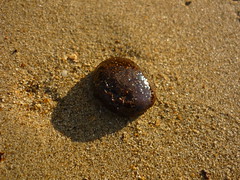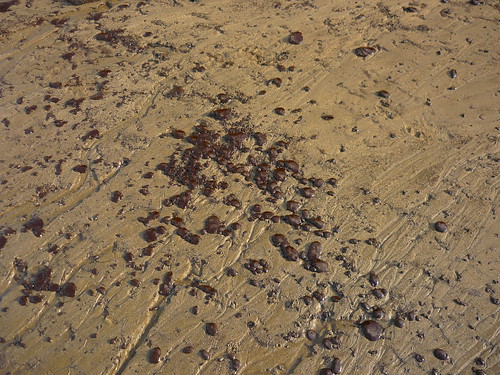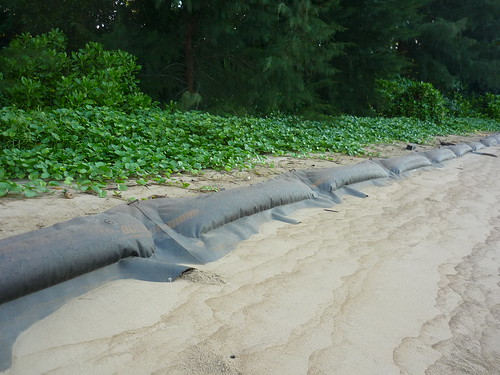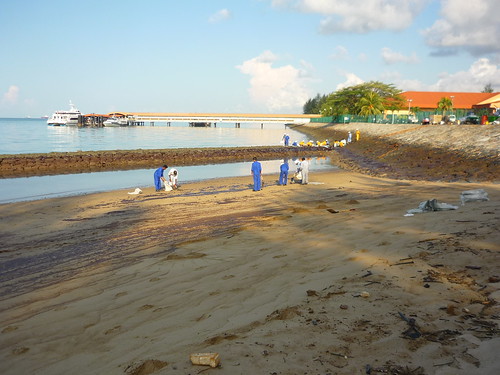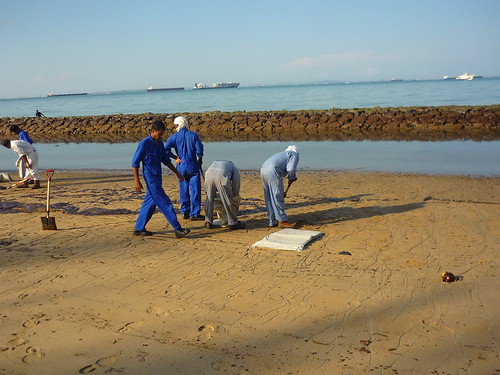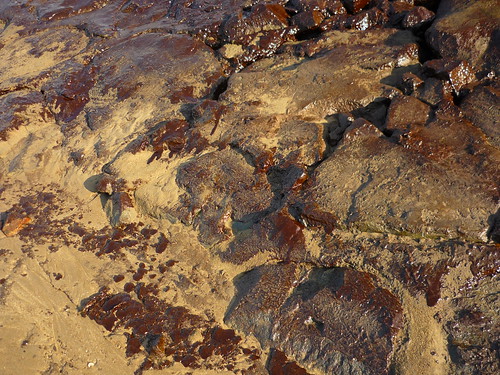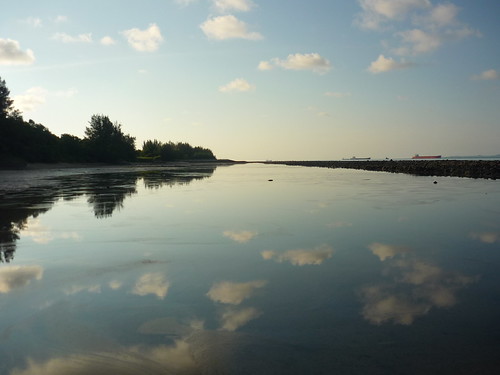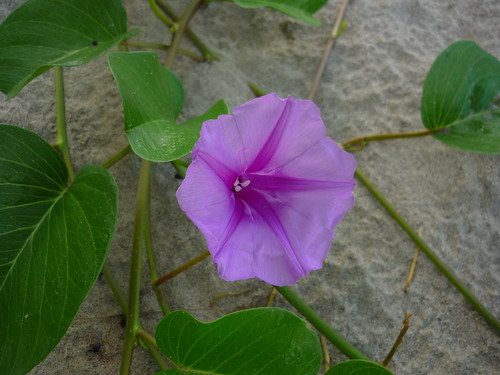
For those of us who visit and explore the shores of Singapore to document the marine life that can be found on our coasts, Tanah Merah stands out as a unique and special place. Although the original shore here is long gone due to land reclamation, a rich community of marine organisms has managed to colonise and reestablish itself. We find habitats as diverse as rocky shores, seagrass beds, sandy beaches, coastal forests, and even a coral reef on the outer edge of the seawall.
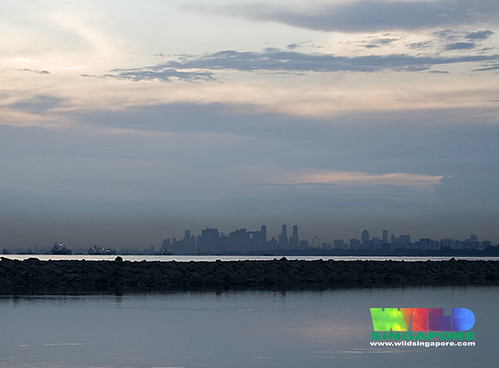
(Photo by
Ria)
Unfortunately, this shore, despite its beauty and diversity, suffers from pollution. Much of the marine life is
slowly recovering from the
devastation of
the oil spill that struck
2 years ago, although some crude oil
still lingers in the environment. Another insidious threat comes from the vast quantities of garbage that wash up and get trapped behind the seawall. Because this area is not under the purview of the armies of cleaners that work tirelessly every morning to remove litter and other trash from our public beaches, the rubbish
simply accumulates, forming massive piles of plastic, broken glass, and other debris.

Litter on Tanah Merah shore, July 2011;
(Photo by Ria)

Dig deep enough, and you'll find out where much of the oil has gone, April 2012;
(Photo by Ria)
In response, the
International Coastal Cleanup Singapore (ICCS) team has decided to conduct a series of
year-round cleanups on this shore.

And so, keen to do my part on a shore that I am personally very fond of, I signed up for the latest session, which was held on
the morning of 28th April.



